For every £1 shoppers spend on tea, they spend more than £2 on coffee. But what makes coffee drinkers tick, and what do they want to see more of in retailers’ fixtures?
This research was commissioned by The Grocer and carried out by Toluna/Harris Interactive independently from Jacobs Douwe Egberts (JDE).
1. Most coffee drinkers get through at least two cups a day
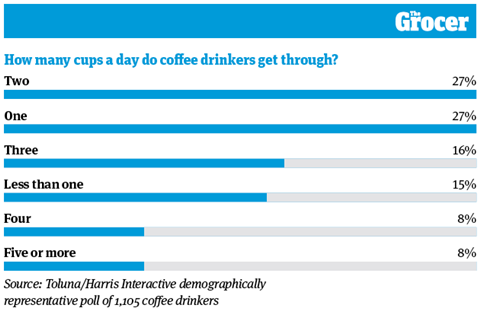
One cup of coffee a day is not enough for most people. In fact, while it’s a daily ritual for 85% of coffee drinkers, only 27% stick to just one cup a day. Fifty-nine per cent sink two or more cups a day: 27% have a couple; 16% drink three; 8% have four; and 8% get through five or more cups.
“Coffee is absolutely central to many people’s daily routine,” says JDE marketing director Roberto De Felice. “While the UK has historically been known as a nation of tea drinkers, Brits today drink more cups of coffee throughout the day than tea, and many consider coffee one of the hardest beverages to go without.”
2. Coffee drinking is an all-day activity
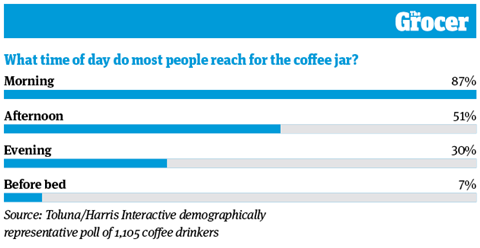
It’s not just for mornings, either. “Coffee is synonymous with mornings, but it’s striking to see how many people reach for coffee at other times of the day,” says De Felice. He points to the finding that while 87% of coffee drinkers drink coffee in the morning, 51% also do so in the afternoon, and 30% have it in the evening.
“We believe this represents a massive opportunity for growth. In fact, if coffee’s share of morning moments could be replicated throughout the afternoon and evening, it could be worth £400m a year in additional category sales.”
3. Nearly a third of coffee drinkers use pod machines at home
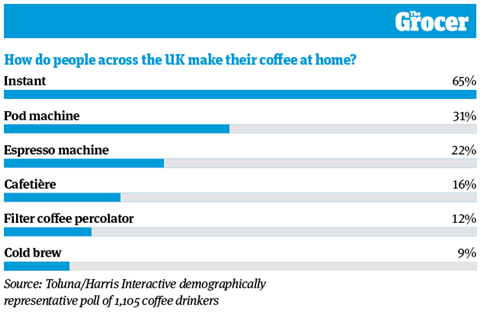
It will be no surprise instant is the most widely drunk coffee type. Sixty-five per cent of respondents say they drink instant coffee at home. What might raise eyebrows, though, is how commonplace systems that deliver premium/café-style serves at home are: 31% use pod machines and 22% use espresso machines.
“We’re working closely with our retail partners to make the most of this opportunity and inspire shoppers at the fixture,” says De Felice, adding that recent activity for Tassimo Coffee Shop at Home has hit the mark. “A well-ranged, exciting coffee fixture can become a real destination in-store, helping to attract new shoppers and build loyalty.”
4. Most people drink instant coffee in the Midlands and Wales
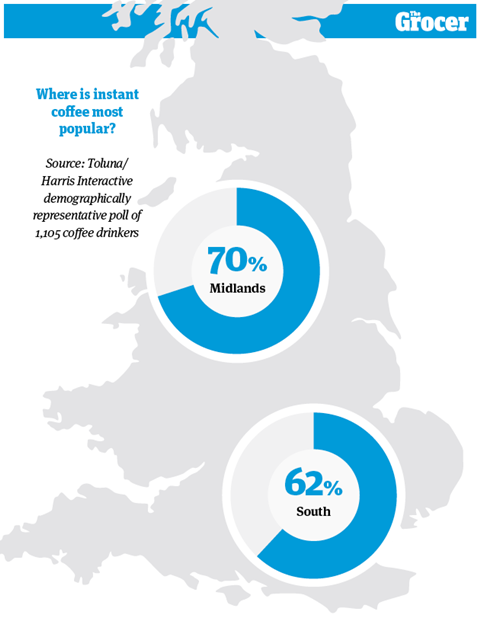
None of the above means instant is inferior, of course. The rise of premium barista-style instant such as Kenco Millicano ensures drinkers get the right balance of convenience, quality and value when they’re making a cuppa, says De Felice, pointing to the June launch of Creamy Cappuccino, Smooth Latte and Cadbury Mocha.
Our research gives some pointers as to who may be most likely to buy innovations in instant coffee. Older people are more likely to drink instant coffee: 73% of 50 to 65-year-olds drink instant, versus 66% of 35 to 49-year-olds and 57% of 16 to 34-year-olds. People in the Midlands and Wales are most likely to drink instant coffee, with 70% doing so.
5. A third of people say they can’t function without coffee

Coffee is more than a casual cuppa for many people. For 31%, it is a passion. For the same proportion, it’s also a necessity: 31% say they cannot function in the morning until they’ve had coffee. Thirty-one per cent also say they prefer coffee at home because they know just how they like it.
“Coffee inspires strong emotions,” says De Felice. “Shoppers care where their coffee comes from, they’re keen to research different origins, strengths and formats, and they’re looking for ways to personalise their coffee. We’re constantly evolving our portfolio to give people the chance to customise their coffee to their preferences.”
6. Nearly half of people drink coffee to relax
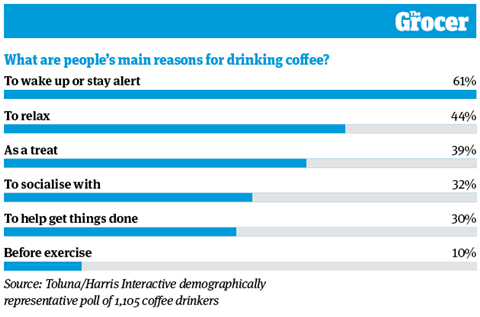
Despite the number of people who drink coffee for the jolt of caffeine, that’s not the only reason they brew up. While 61% of people drink coffee to wake up or stay alert and 30% use it as a way of getting things done, 44% of coffee drinkers use it to relax and 39% treat themselves with it.
“One of the biggest changes in coffee is its evolution from a largely functional category to one focused on lifestyle and enjoyment,” adds De Felice. “With so many shoppers turning to coffee as a treat and using it to relax, a key growth opportunity for retailers is ensuring ranges appeal to enjoyment and exploration.”
7. Nearly one in four coffee drinkers froth their own milk at home
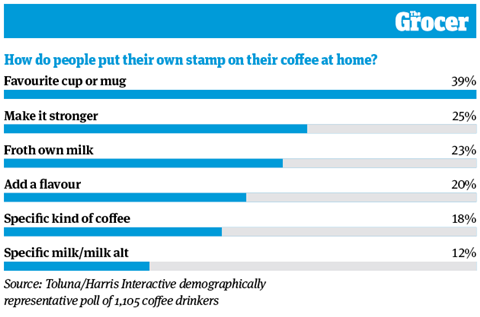
With so many reasons to drink coffee, people are coming up with more ways to put their own stamp on their coffee. For 39%, it’s enough to sip their coffee from their favourite mug or cup. One in four (25%) coffee drinkers make it stronger and 23% froth their own milk, helping to explain the boom in launches of home barista milks in recent months.
8. One in two male coffee drinkers grind their own beans

Another way to make your coffee your own is to grind your own beans. Forty-four per cent say they grind their own: 32% do so sometimes as a treat, and the remaining 12% do most or all the time. Men are more likely than women to grind their own beans: 50% versus 38%. They’re also more likely to do so most or all the time: 14% versus 10%.
9. A third of coffee drinkers are buying more from coffee shops

Our research also gives some cause for cheer about the state of the economy. Thirty-five per cent of people say they’re buying more coffee from coffee shops than they were a year ago, suggesting they’re more comfortable financially; 41% are unchanged and 23% are buying less. Younger people are most likely to be buying more, notes De Felice.
“A lot of recent growth is coming from younger consumers,” he says. “The research bears this out: 48% of 18 to 34-year-olds say they’re buying more coffee now, compared with 37% of 36 to 49-year-olds and 19% of 50 to 65-year-olds. Younger consumers increasingly want choice, variety and the opportunity to personalise their coffee to match their tastes.”
10. Drinkers want more choice and better-quality coffee from retailers
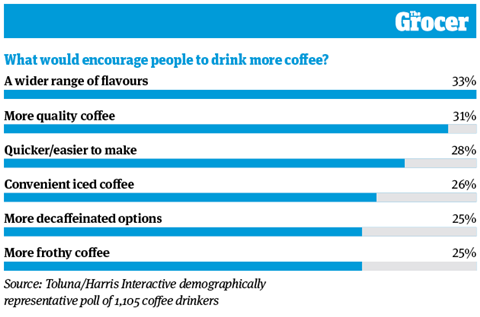
It’s not just younger people. A third (33%) of people polled want a wider range of flavours from supermarket coffee fixtures, and 31% want more quality coffees. Convenience is also crucial: 28% want to see quicker and easier-to-make products in store and 26% want more convenient iced coffee lines.
“When it comes to replicating coffee shop favourites at home, consumers want to tick three boxes: great taste and variety, convenience and value,” says De Felice. “Strong retail growth in frothy coffee specialities and single-serve pods speaks to this, as does the fact iced coffee is now the go-to choice for many, with rising demand coming mainly from younger people.”
fmcg




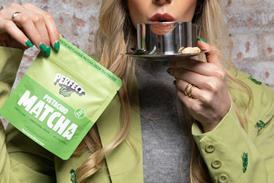



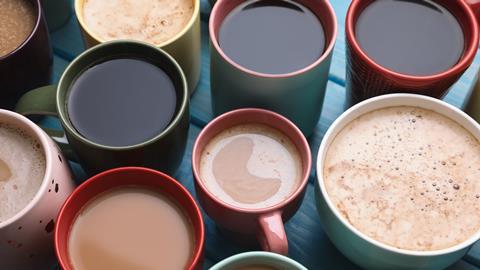


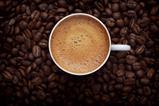

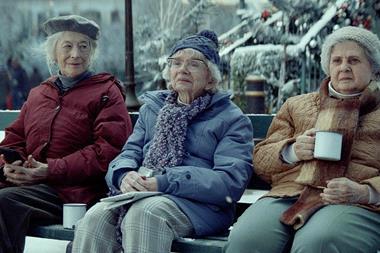
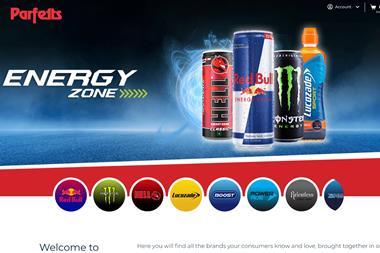
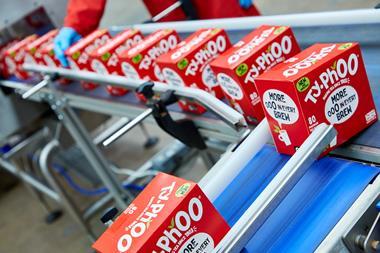
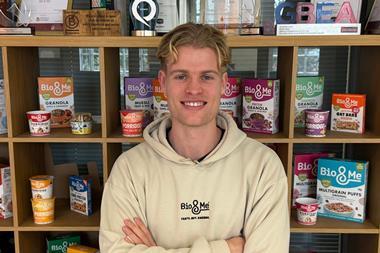


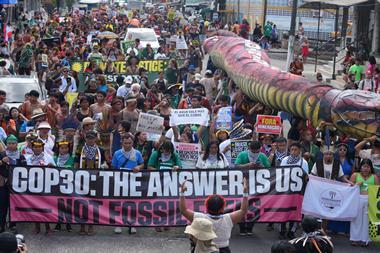
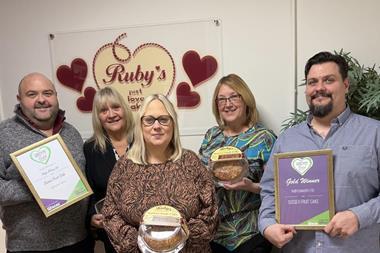



No comments yet